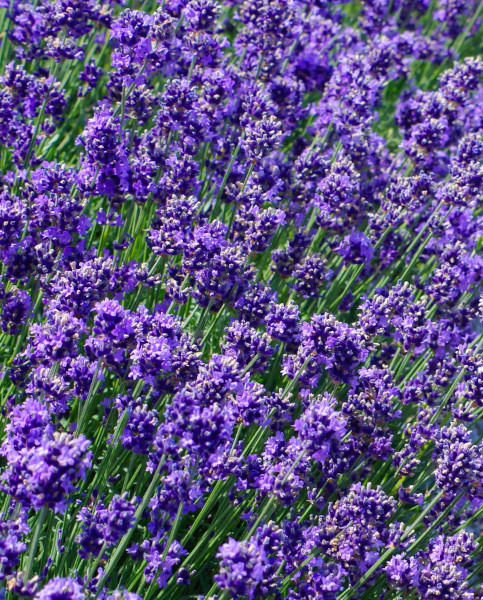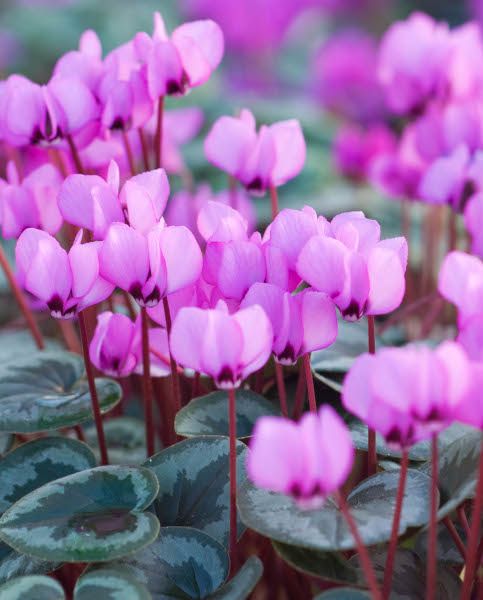How to grow Eucalyptus
Eucalyptus are evergreen shrubs or trees native to Australia and are often known as blue gum. They are known for their attractive grey-blue foliage which is often used in flower arranging as the stems last exceptionally long in the vase and the subtle colour works well with most flowers.
Eucalyptus leaves are processed for their essential oils which have medicinal properties, and the fresh menthol scent is both familiar and pleasant.
Most varieties of Eucalyptus are fully hardy in the UK and can be grown as trees which may be coppiced or pollarded to keep them in check and encourage lots of bushy fresh growth.
They can also be grown in large pots which can be placed in a spot where the clean fragrance can be appreciated. Some varieties also produce small pink, red or white flowers and seedpods which are known as gumnuts.

Key Information
Soil pH
Position
Hardiness


Where & when to plant Eucalyptus
Position- Full sun
Soil- Well-drained
Flowering Period- Spring and summer
Hardiness- Hardy although some varieties are not fully hardy
Some varieties of Eucalyptus will reach towering heights of up to 30m if you allow them to grow without regular pruning, or pollarding. Other varieties such as Eucalyptus gunnii France Bleu have been specially bred to remain small and are perfect for a pot on your patio, providing year-round interest with its attractive silvery foliage and pretty pom-poms of white flowers in autumn.
Consider the eventual size of your Eucalyptus, or the size and shape which you are planning to maintain when choosing a planting site for your tree or shrub. The area should be in full sun and sheltered from direct winds for these plants to thrive best.
Eucalyptus plants tend to do best when they are planted as young plants which can develop a strong root system without any staking. Larger plants may suffer from wind rock and will not mature into shrubs which are as strong as those which are planted as smaller plants.
How to plant Eucalyptus
Dig a hole slightly wider and deeper than the pot which your plant arrives in. Eucalyptus plants have no particular soil needs but prefer a spot which has well drained ground. There is no need to add any additional organic matter to the soil, but you can add some grit to the planting hole if you garden on heavy clay or waterlogged ground.
Tease your plant from it from its pot and gently loosen the roots. Place it in the planting hole and fill in around the plant with soil before firming in and watering well.
If you are growing your Eucalyptus in a pot, add 1/3 grit to your growing medium which can be either multi-purpose or loam-based compost.

What to plant with Eucalyptus
The evergreen quality of Eucalyptus means they look great and add interest year-round to the garden.
Try not to cut the foliage whilst the growth is young, and the growing tips are soft in summer as they are likely to wilt in your vase or arrangement.
Eucalyptus make wonderful specimen plants in a pot and work well at providing attractive screening in the garden. They are particularly suited to Contemporary and Mediterranean planting schemes next to Lavender, Sage, Thyme, Senecio and Rosemary.
Shade loving, or shallow rooted groundcover plants can be grown beneath Eucalyptus such as Vinca, Heuchera, Woodruff and Cyclamen.
Please contact our helpful and knowledgeable Customer Care Team at Hayloft if you would like any further help or planting ideas for your Eucalyptus.



How to care for Eucalyptus
Eucalyptus plants need little care in order to thrive.
Young plants should be watered regularly until they have established themselves.
An annual mulch around the base of the plant with compost is beneficial to retain moisture and suppress any weeds.
During spring and summer, potted Eucalyptus will benefit from a balanced liquid feed such as seaweed fertiliser to maintain soil nutrients. You should ensure pot-grown plants never fully dry out and they can be re-potted into a slightly larger pot every two years with fresh soil or compost.
If you are growing a less hardy variety in a pot, then these plants should be given winter protection by moving them into an unheated greenhouse for the coldest months.
How to prune Eucalyptus
Smaller varieties of Eucalyptus should not need any pruning.
Larger varieties can have their height maintained, especially for smaller gardens, by coppicing or pollarding.
Coppicing involves cutting the whole shrub back to the ground every year or so in late winter. This practice results in lots of fresh young growth forming and more of a bush or shrub shaped plant than a tree. Coppicing is useful if you like to cut the stems for floristry.
Pollarding is more beneficial for larger trees and involves cutting the stems back to the main trunk to maintain a desired height. This practice is also best carried out in late winter or early spring. Pollarding of much larger trees should be carried out by an arborist but bear in mind mature trees may not fully recover if they are cut back hard later in life.
Any stems or branches which are dead or crossing and congested can easily be removed with a sharp pair of secateurs.
How to propagate Eucalyptus
It is possible to propagate Eucalyptus by taking cuttings, but they are very tricky to root, so most people tend to propagate news plants by growing from seed.
Using collected ripe or bought seed, encourage germination by stratifying your seeds. This involves placing the seeds in a sealed bag in a fridge between 3 and 5°C for around two months.
In late winter or early spring, sow the seeds in pots of seed compost. Water the pots and place them inside a heated propagator or on a sunny windowsill to germinate. Germination usually occurs at a temperature of 15-20°C within 3 weeks. Keep the pots regularly watered but not too wet during this time.
Once the baby plants have reached about 20cm tall, they can be potted on or planted outside.




